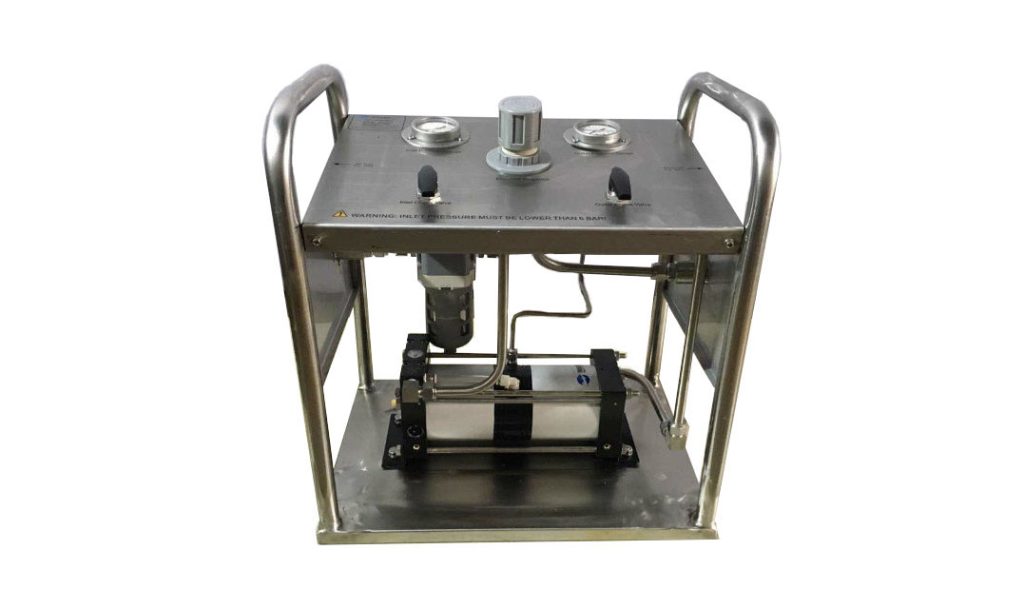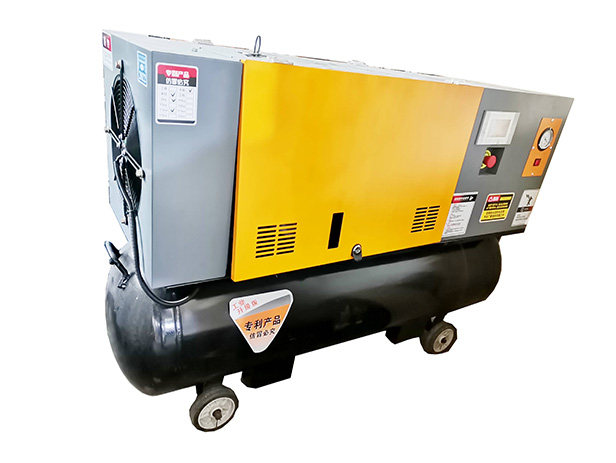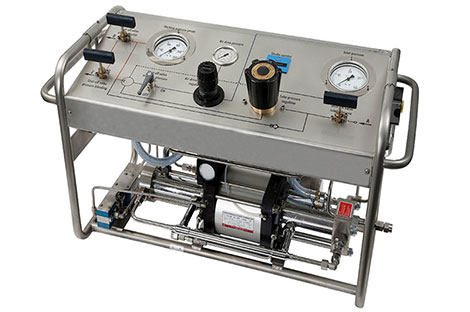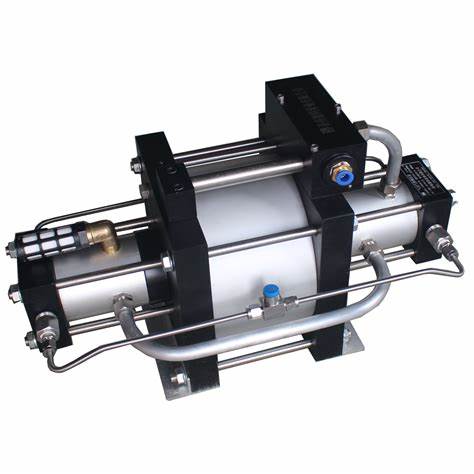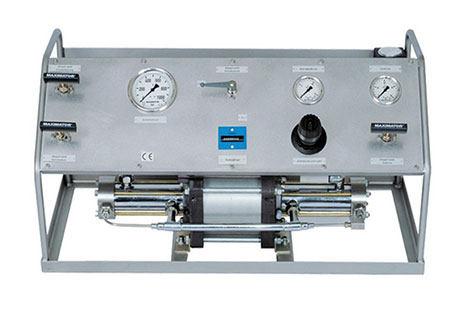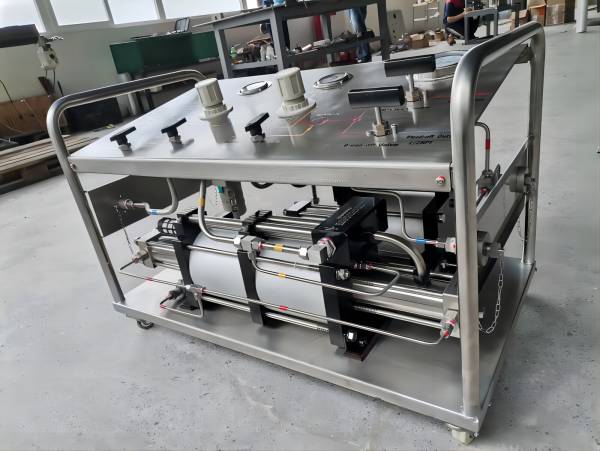How does the gas booster pump perform gas tightness testing?
Since gas booster pumps are used in many different industries, it’s necessary to use them properly. However, since these pumps can quickly adapt to their surroundings and resume operation, what should we know when the equipment is tested for gas sealing?
The gas booster pump system utilizes the gas booster pump as the core of pressurization and further raises the pressure of compressed air, nitrogen, helium, and other compressed gases to meet the needs of air tightness leak detection, high-pressure gas assisted injection molding, automobile braking system test, high-pressure gas system and instrument test, aircraft tire and nitrogen charging, etc.
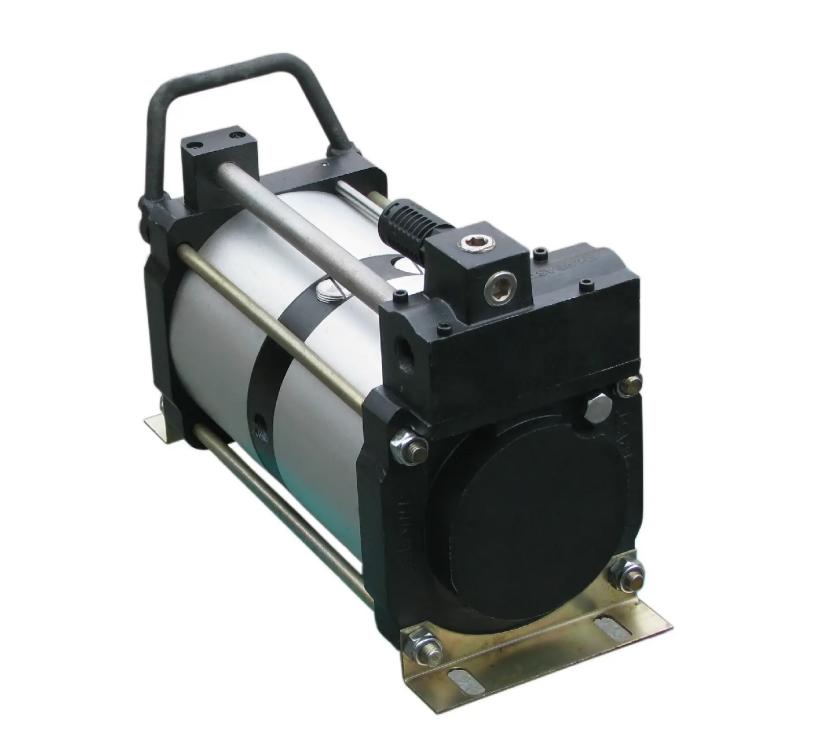
Detection object and equipment selection
Gas booster pumps can effectively meet the needs of these industries for certain sealing test requirements or for other types of penetration, so now that we are talking about some sealing tests, we can meet the necessary standards and offer people better service options. However, at the time of the sealing test, there may be some specific detection issues.
The choice and application of all equipment have a certain range. When using the gas booster pump, can it have a greater breakthrough and development, be applied to a wider range, and help people achieve more in the course of operation, depending on the environmental conditions or some practical operation problems? High effectiveness means that these seal tests will be carried out in a very professional manner; they will comprehend the circumstances and carry out the tasks more effectively.
How it works and related metrics
Some gas booster pumps have relatively high inflation choices that enable recovery of high-pressure oxygen, gas helium, nitrogen, air standards, etc. The safety test of the gas booster pump is also crucial in the selection and use of the process. There will be some high-pressure gas used during operation, making it crucial to detect air tightness as well as the effects of different gases. When the source is active, these gadgets also have a crucial function.
As some airlines’ original casting or detection, the air tightness test of an engine cylinder, an air conditioning pipe, and an air tightness test of the heater core can all be performed using a gas booster pump, and some of its safety testing procedures can produce excellent results, it is important to comprehend the actual workings of sealing and a few related indicators while conducting the test.
Air tightness detection operation method
1. Fill the duplex lubricator with lubricant. Use 10# or 20# mechanical oil in the south, and low-condensation hydraulic oil or antifreeze mechanical oil in the north during the winter.
2. Attach the pipeline that requires testing. The device’s air inlet is connected to the low-pressure compressed air PU tube (12), the 1.5-meter high-pressure rubber hose is attached to the inflation gun head, and the gun head side is attached to the car gas filling valve. The side of the device is attached to the high-pressure gas exit. The air source pressure shouldn’t be higher than 0.7MPa (7kgf/cm2), therefore shut the unloading valve, open the high-pressure needle valve, and keep it there.
3. Change the duplex’s pressure, spin the duplex to the left and right to change the gas source pressure to 0.5 MPa, and then boost the gas pressure to 20 MPa.
4. When the gas booster pump is activated by opening the manual reversing valve, also referred to as the hand pull valve, the pump automatically shuts off when the preset pressure is reached. Alternatively, once the high-pressure gauge reaches the necessary pressure, close the manual reversing valve to stop the pump from operating.
5. To remove the test piece after releasing the high-pressure gas in the pipeline, open the unloading valve, close the manual reversing valve, and turn off the driving gas source after maintaining the pressure for 5 minutes.
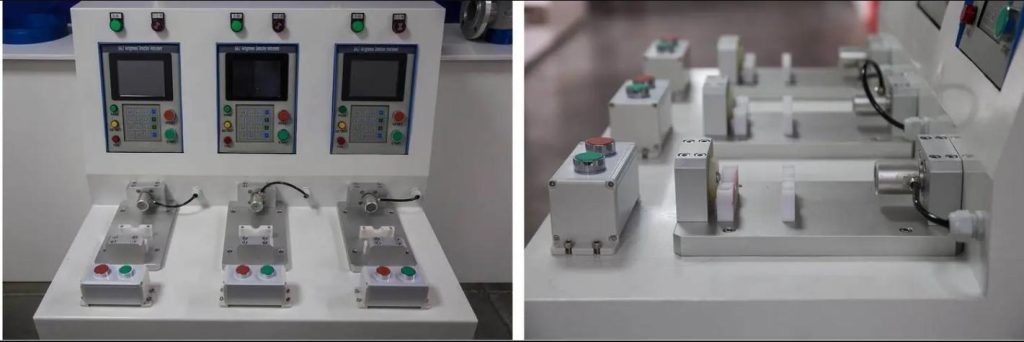
Main features of air tightness detection device
1. The equipment may be disassembled flexibly and the connection is safe and reliable thanks to the modular design. The entire piece of equipment has a closed-frame design, and operating in panel control mode is simple and convenient. The test bench has four universal wheels, making it simple to move around.
2. Compressed air does not require oil mist lubrication in lubrication-free designs, which satisfies the standards for explosion-proof designs;
3. Utilizing oil-free compression technology, the gas is clean.
4. No electrical apparatus is required, and no spark is generated;
5. Stepless pressure adjustment is possible for the output;
6. To alter the supercharger’s action frequency and lengthen its service life, the driving airflow can be changed.
7. It is self-cooling without a cooler.

